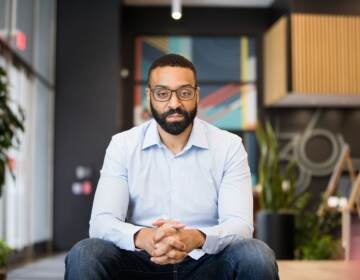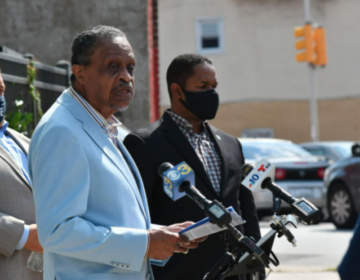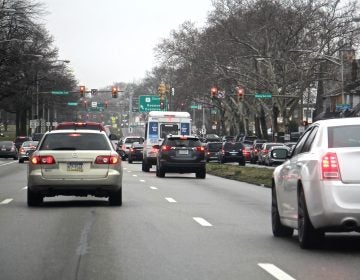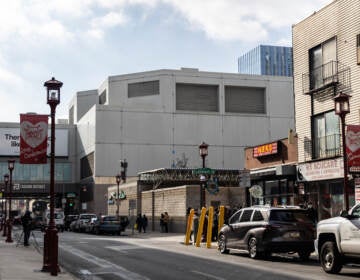Closing Philly’s digital divide will take influencers — the offline, neighborhood kind
One in six Philadelphians remains unconnected even after years of public and private sector efforts. More effort is needed on the ground in the city’s neighborhoods.
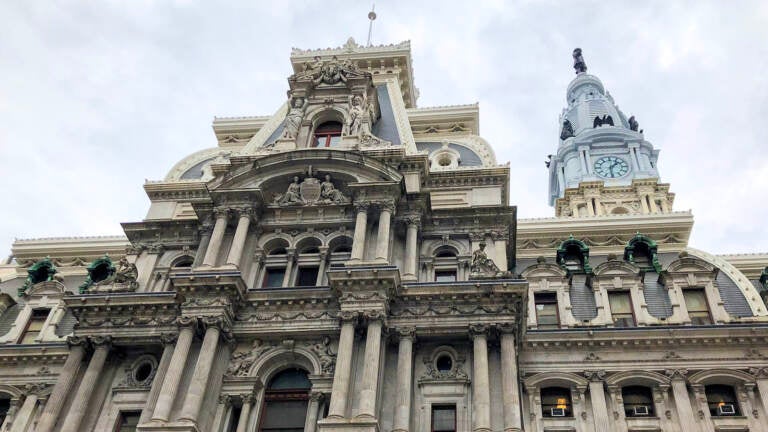
Philadelphia City Hall. (Danya Henninger/Billy Penn)
In Washington, the final passage of President Joe Biden’s bipartisan infrastructure bill drew cork-popping. And for good reason. This landmark legislation includes $65 billion to expand broadband, fix roads and bridges, modernize public transportation, and remove lead pipes.
On some issues — like the infrastructure bill’s long-awaited digital divide plan — it’s more of a starting block than a finish line. The real work still lays ahead, and Pennsylvania needs a plan to get it right.
The bill’s $14.2 billion Affordable Connectivity Program (ACP) is the most ambitious federal initiative ever enacted to address the digital divide. COVID-19 laid bare the costs of the divide, and future generations may look back on this plan the same way we now view Medicaid or SNAP.
The plan is straightforward: Any household earning less than twice the federal poverty limit can get up to $30 a month off their monthly broadband bill. Since most big providers already offer low-income programs for $10 to $20 per month, the program makes entry-level home internet service free effectively for any low-income family. Twenty-seven percent of all Pennsylvania households — almost 3.5 million people — will qualify. That’s a pretty big deal.
But just offering broadband for free is no guarantee the unconnected will actually sign up. Years of data, from broadband providers’ low-income programs, from the city’s ambitious PHLConnectED partnership, and from the FCC’s temporary Emergency Broadband Benefit program, show these initiatives help, but uptake rates often remain frustratingly low.
One in six Philadelphians remains unconnected even after years of public and private sector efforts. For the Hispanic community especially, broadband adoption rates continue to lag.
For ivory tower experts and Beltway think tanks, this pernicious, persistent broadband divide can be confusing and exasperating. If “free” isn’t enough to get people online, what else can we possibly do?
But here on the ground and in the neighborhoods, none of these data points is really that surprising. We’ve known for years that affordability is just one of many factors conspiring to delay universal connectivity.
Free home internet sounds great, so long as you actually know where “home” is going to be from one week to the next. Families struggling to keep a roof over the head or bouncing between transitional housing and motels amidst a housing affordability crisis don’t really have the luxury to plan for broadband connections.
Neighbors who’ve been preyed upon by payday lenders or exploitative employers bring a hard-earned mistrust to free or low-cost programs; skepticism about “too good to be true” often reigns.
Many of our friends, relatives, and neighbors who struggle with digital skills need help navigating the digital world — just the sign-up process alone can be anxiety-inducing. Studies show digital skills gaps are two to three times more prevalent among immigrants and those with limited English proficiency. Unless we get people comfortable online, all the connectivity in the world won’t help.
And too many in our community just feel passed over and left behind by a digital world that just doesn’t seem to relate to them. More than 70% of unconnected adults report they’re just not interested in signing up.
These deep-rooted, complicated challenges can’t be tackled remotely from a think tank conference room. It’s going to take shoe leather — door to door, peer to peer, neighbor to neighbor. We need to equip nonprofits, teachers, pastors, librarians, clinic nurses, mom-and-pop local businesses, and every other neighborhood “influencer” with the tools and information to stand at their neighbors’ elbow and help them up the digital on-ramp.
The Affordable Care Act included funding to create a corps of health care navigators, plus public awareness campaigns to get the word out. We know this approach can work. The infrastructure bill steals a page from the ACA’s book, committing $2.75 billion to a grant program to fund this kind of digital equity outreach and skills training.
City and state government leaders need to get to work on our plan, and local community organizers need to be at the table from day one. Earlier public and private sector programs give us a roadmap, and now the Biden infrastructure bill gives us the resources. But we’re going to have to provide the muscle and the sweat ourselves.
Hon. Danilo Burgos represents parts of North Philadelphia in the Pennsylvania House of Representatives.

Subscribe to PlanPhilly
WHYY is your source for fact-based, in-depth journalism and information. As a nonprofit organization, we rely on financial support from readers like you. Please give today.



